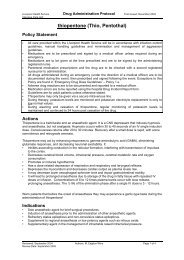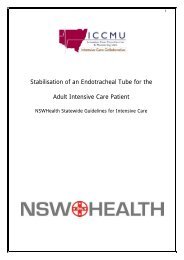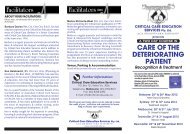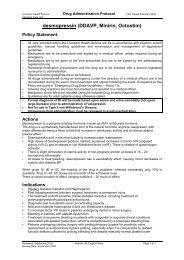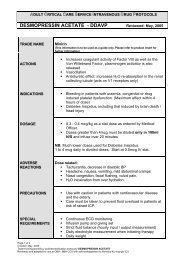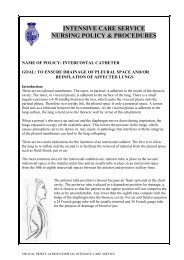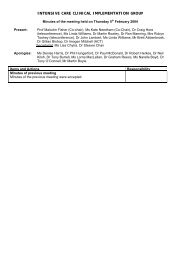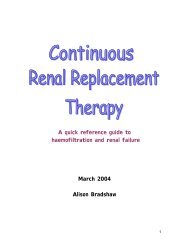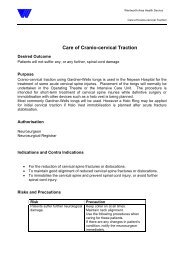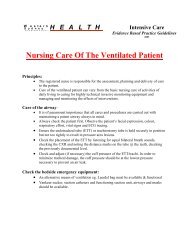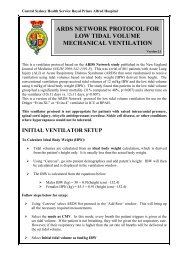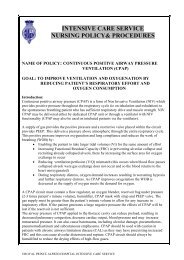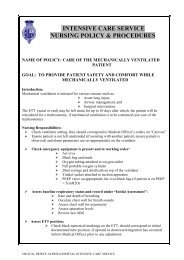Endotracheal tube, securing - Intensive Care & Coordination ...
Endotracheal tube, securing - Intensive Care & Coordination ...
Endotracheal tube, securing - Intensive Care & Coordination ...
You also want an ePaper? Increase the reach of your titles
YUMPU automatically turns print PDFs into web optimized ePapers that Google loves.
St Vincent’s Hospital <strong>Intensive</strong> <strong>Care</strong> Services Page 2 of 16<br />
Securing an ETT: <strong>Intensive</strong> <strong>Care</strong> Clinical Practice Manual, Policy / Procedure R 4.1<br />
4.0 DEFINITIONS<br />
An ETT is a breathing <strong>tube</strong> which is passed through a patient’s oro or naso -pharynx into<br />
the trachea in order to allow a patient to be ventilated.<br />
Intubation refers to the passage of the ETT into the trachea.<br />
Extubation is the removal of the ETT from the patient’s trachea.<br />
5.0 INDICATIONS<br />
All patients who have an ETT must have it safely and appropriately secured.<br />
The standard way of <strong>securing</strong> ETTs at St Vincent’s ICU is to use trachy tape as described<br />
in Section 7.1 and 7.2.<br />
The technique using brown leukoplast tape is indicated for patients who should avoid<br />
having tape tied around the back of their neck. This includes patients who have had<br />
neurosurgical procedures and major head and neck surgery. In these situations the tape<br />
may cause venous congestion of the brain or impair the perfusion of free grafts by<br />
pressure on the arterial supply or venous drainage.<br />
The technique using the Oral <strong>Endotracheal</strong> Tube Attachment Device (E-TAD) is<br />
indicated for adult patients requiring longer term intubation (eg greater than 3 days). It is<br />
NOT appropriate for patients who:<br />
• Don’t have teeth or are unable to wear upper dentures<br />
• have full lips, facial swelling or protruding teeth<br />
• have moustaches or full beards.<br />
This technique is described in Section 7.5 and 7.6.<br />
6.0 PRINCIPLES<br />
Appropriately and safely <strong>securing</strong> an ETT lessens the risk of accidental or self<br />
extubation. It also prevents migration of the <strong>tube</strong> to an unsafe and potentially harmful<br />
position either upwards into the larynx or downwards into the right main bronchus.<br />
Securing an ETT will be carried out utilizing the following practice principles:<br />
• Aseptic technique<br />
• Patient comfort and safety<br />
• Anatomy and physiology<br />
• Body substance isolation<br />
Securing an ETT Policy / Procedure R 4.1 Page 2 of 16<br />
ICU Clinical Practice Manual Implemented July 2006, Review July 2009.




